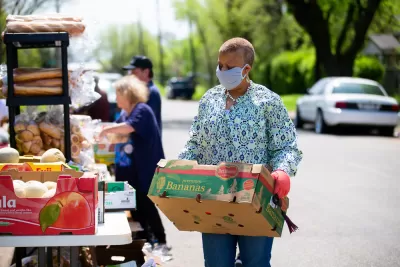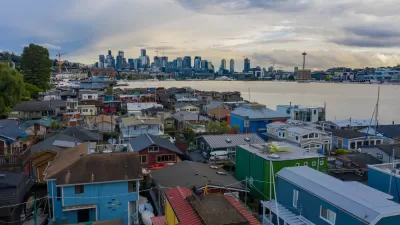A study from Des Moines found that households in historically redlined parts of town are more likely to have to seek help from food pantries.

An article by Linh Ta on Axios highlights the persistent negative impacts of redlining on American communities, citing a recent study from the Des Moines Area Religious Council that finds that households in that city’s historically redlined district are most likely to experience food insecurity.
“The redlined neighborhoods that lacked investment 90 years ago — many of which are on the city's south and east sides — are still suffering from economic instability and lower home ownership rates, according to DMARC.” Some of these areas are also at the highest risk for flooding, the report noted.
“Out of all the food pantry users in the Des Moines metro, about 43% of them live in a former C or D district, said Luke Elzinga, spokesperson for DMARC.” Homes classified as C or D properties were deemed “high risk” for lending. According to the report, “55% of multi-race Hispanic families that visited DMARC's food pantries lived in one of those districts compared to just 38% of white food pantry users.” Elzinga pointed to the need for support in multiple areas to reduce food insecurity among low-income households. “Factors like improving affordable housing options and childcare factor into economic stability.”
FULL STORY: Struggles continue in Des Moines' redlined district

Alabama: Trump Terminates Settlements for Black Communities Harmed By Raw Sewage
Trump deemed the landmark civil rights agreement “illegal DEI and environmental justice policy.”

Planetizen Federal Action Tracker
A weekly monitor of how Trump’s orders and actions are impacting planners and planning in America.

Why Should We Subsidize Public Transportation?
Many public transit agencies face financial stress due to rising costs, declining fare revenue, and declining subsidies. Transit advocates must provide a strong business case for increasing public transit funding.

Understanding Road Diets
An explainer from Momentum highlights the advantages of reducing vehicle lanes in favor of more bike, transit, and pedestrian infrastructure.

New California Law Regulates Warehouse Pollution
A new law tightens building and emissions regulations for large distribution warehouses to mitigate air pollution and traffic in surrounding communities.

Phoenix Announces Opening Date for Light Rail Extension
The South Central extension will connect South Phoenix to downtown and other major hubs starting on June 7.
Urban Design for Planners 1: Software Tools
This six-course series explores essential urban design concepts using open source software and equips planners with the tools they need to participate fully in the urban design process.
Planning for Universal Design
Learn the tools for implementing Universal Design in planning regulations.
Caltrans
Smith Gee Studio
Institute for Housing and Urban Development Studies (IHS)
City of Grandview
Harvard GSD Executive Education
Toledo-Lucas County Plan Commissions
Salt Lake City
NYU Wagner Graduate School of Public Service





























